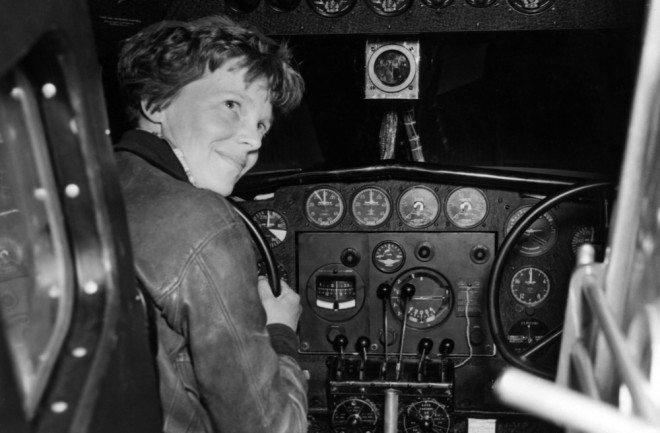On July 2, 1937, pilot Amelia Earhart and navigator Fred Noonan hopped into their Lockheed 10-E Electra and headed for Howland Island, a 0.6-square-mile coral atoll in the middle of the Pacific Ocean. Following takeoff, the pilot, the navigator, and the plane were never seen again.
The two disappeared during their attempt to fly their way around the world, with the location of their disappearance having eluded experts for decades. But this week, experts from the ocean exploration firm Deep Sea Vision offered fresh insights into the ill-fated flight, posting persuasive imagery of what looks like Earhart’s long-lost plane.
“Deep Sea Vision found what appears to be Earhart’s Lockheed 10-E Electra,” the firm, based in Charleston, South Carolina, posted on Instagram on January 27, 2024. “After an extensive deep-water search, a talented group of underwater archaeologists and marine robotics experts have unveiled a sonar image that may answer the greatest modern mystery,” they added in another post.
Read More: Why Are We Still So Fascinated By Amelia Earhart?
Locating the Long-Lost Aircraft
According to the firm, the image was taken with the HUGIN 6000, an autonomous underwater vehicle, armed with a surveillance width of around 5,000 feet and an array of deep-sea sensors. Among these sensors were several sonar devices, designed to detect underwater objects using the bounce of sound waves between the surface and seafloor.
“Deep Sea Vision scanned more than 5,200 square miles of ocean floor,” the firm added in another Instagram post, “before finding what could be the legendary American aviator’s Lockheed 10-E Electra.”
The shape, size, and position of the object seem to match those of Earhart’s aircraft, a modified, all-metal model with signature “twin tail” stabilizers. Submerged some 100 miles off of Howland — at a depth of approximately 16,000 feet, according to an article from CNN — the object falls well within the scope of the aviator’s approximate flight path.
Read More: Rare Titanic Wreck Footage from 1985 Finally Released. Why Now?
Theories of Flight Failure
Ultimately, the image supports the theory that Earhart’s aircraft ran out of fuel and fell into the ocean. Around 19 hours into the flight, Earhart and Noonan had radioed the U.S. Coast Guard with the transmission that their fuel was “running low.” Around 20 hours into the flight, they had radioed again, this time with the flight’s final transmission.
Though the U.S. Coast Guard and U.S. Navy’s subsequent searches for Earhart and Noonan failed, being bogged down by the brutality of the Pacific’s presumably plane-swallowing waves, they theorized that the aircraft fell within 100 miles of Howland. Still, only continued investigation can confirm the identity of Deep Sea Vision’s proposed plane, which could contain identification numbers or other clues as to its previous owners or operators.
Earhart was 39 years old at the time of the flight, and Noonan was 45. If completed, their trip would’ve clinched Earhart as the first female pilot to circumnavigate the world.
Read More: How Shackleton’s Ship Was Finally Found After Century-Long Search




